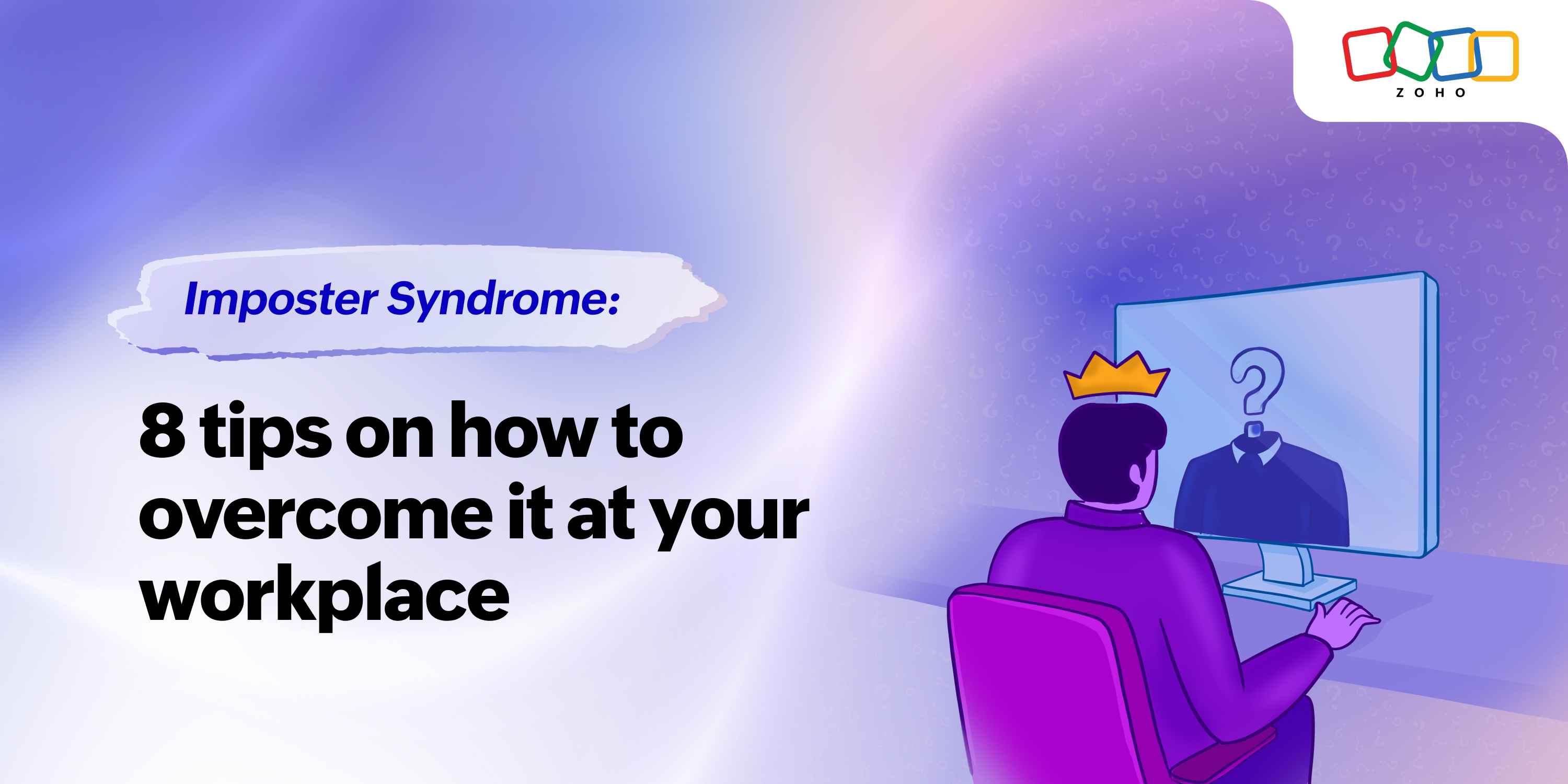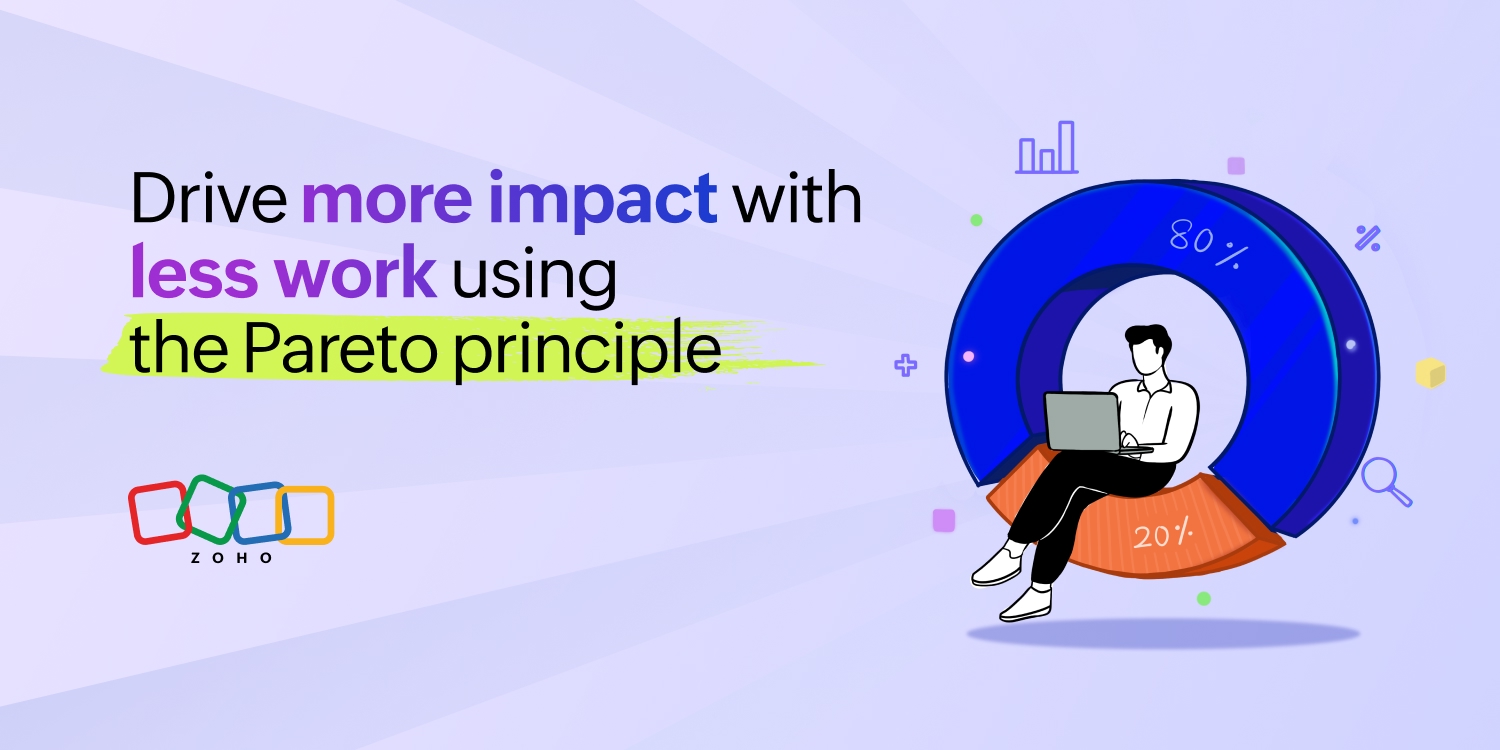- HOME
- All Topics
- Productivity in the workplace
- The Feynman Technique: How to learn anything faster and think like a genius
The Feynman Technique: How to learn anything faster and think like a genius
- Published : February 27, 2025
- Last Updated : March 24, 2025
- 166 Views
- 6 Min Read
Have you ever been in a meeting, talking about a new project or idea, and you can feel the confusion in the room? Or worse, you start explaining something, and halfway through, you realize you don’t actually get it yourself? Don’t worry, we’ve all been there. You’re not alone.
The problem? We think we understand things‚ÄĒuntil we try to explain them. But what if there was a way to not just understand things better but also explain them clearly‚ÄĒeven to a five-year-old? This is where the Feynman Technique comes in. It's a super simple (yet powerful) method that lets you learn faster, think clearer, and explain things in a way that even your 5-year-old niece will understand. 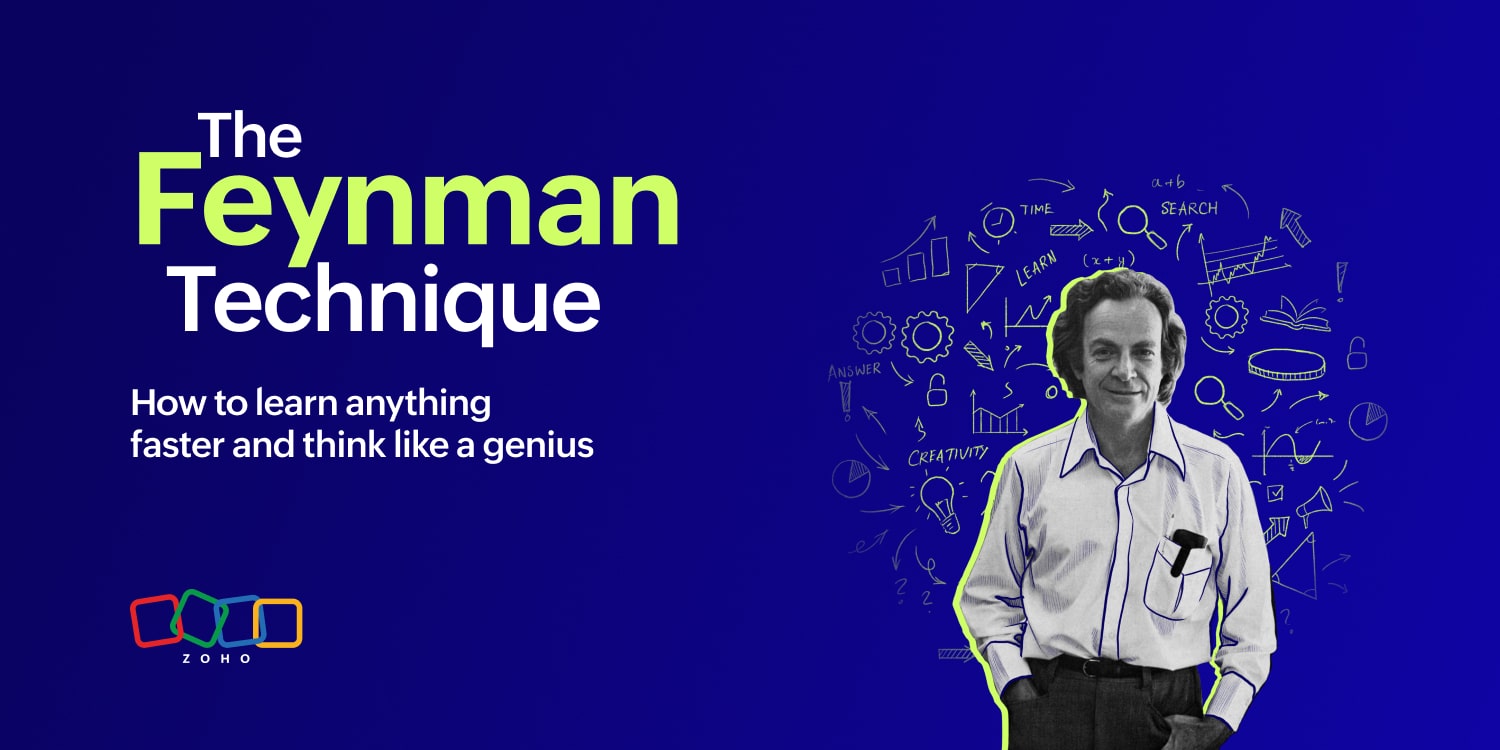
It’s not a gimmick. It forces you to confront what you actually know vs. what you think you know. And if it's used correctly, it can shave hours off your learning process, turn you into a clearer thinker, and make your communication 10x more persuasive.
Let’s break it all down.
What is the Feynman Technique (and why should you care)?
The Feynman Technique is named after Nobel Prize-winning physicist Richard Feynman. His secret to mastering complex ideas was succinctly explained by another, more easily recognizable Nobel laureate. Albert Einstein famously said, "If you can’t explain something simply, you don’t understand it well enough."
It’s that simple. So if you’re struggling to wrap your head around a concept or convey an idea, it’s a sign you need to dig a little deeper.
The Feynman Technique is a four-step method that forces you to really understand a concept‚ÄĒnot just memorize it. It‚Äôs a clever way to rewire how you learn and think. Whether you‚Äôre a student, working in tech, or just someone trying to get a handle on a new project, this technique will help you work smarter and learn faster. Ready to dive in? Let‚Äôs go!
The 4 simple steps of the Feynman technique
Here are the four simple steps of the Feynman Technique.
- Pick a topic and write it down.
- Explain it like you’re teaching a five-year-old.
- Identify gaps in understanding (and fix them).
- Refine it until it's foolproof.
Step 1: Pick a topic and write it down
The first step is to pick a topic you want to understand. It could be a new marketing strategy you’re learning or even something about Blockchain. Whatever it is, write it down. Putting it on paper (or typing it, whatever works for you) makes you think about it and organizes your thoughts.
The key here is writing. When you write down what you’re trying to learn, you start to crystallize the important points in your brain. You’re not just taking information in; you’re actively engaging with it.
Step 2: Explain it like you’re teaching a five-year-old
Now, rewrite your explanation‚ÄĒbut this time, throw out all of the jargons, acronyms, and vague terminology. Pretend you‚Äôre explaining it to a curious 5-year-old.
For instance, let's say you're trying to explain how artificial intelligence can predict what you're going to say. You can give two types of explanation for it.
Complicated explanation:
‚ÄúAI utilizes complex neural networks to iteratively refine its predictive capabilities based on large datasets.‚ÄĚ
Translation: Nobody outside of tech cares.
Feynman-style explanation:
‚ÄúAI is like a detective that reads thousands of mystery novels. Over time, it gets so good at spotting clues that it can guess the ending before it happens.‚ÄĚ
Now, that's easy to understand! The second explanation is:
- Simple
- Relatable
- Memorable
When you can explain a concept this way, it sticks‚ÄĒboth in your own mind and in the minds of others.
Step 3: Identify gaps in understanding (and fix them)
The third step is to dig deep to find if there are any gaps in your understanding. When you explain something in simple terms, you’ll find gaps in your knowledge. Maybe there’s a part that doesn’t quite make sense, or you’re not sure how to explain it. This is good news because it means you’ve found a weak spot in your understanding.
How to find your blind spots
- Say it out loud. If you hesitate or keep circling back, that’s a clue.
- Ask yourself ‚Äúwhy‚ÄĚ until you get stuck. If the answer feels vague or uncertain, there‚Äôs a missing piece.
- Write it down from memory. If parts feel shaky or you leave things out, that’s a gap.
- Teach someone. If your explanation doesn’t flow smoothly, something’s off.
How to fill in the gaps
Now that you know where you‚Äôre unsure, dig deeper. Read more, ask questions, watch an expert break it down‚ÄĒwhatever helps you connect the dots.
Step 4: Refine it until it's foolproof
Once you feel like you’ve got a solid grasp of the concept, take one more look. Can you simplify it further? Can you get rid of any extra details? The goal here is to make the explanation as tight and clear as possible. The simpler, the better.
- Cut fluff. No unnecessary words.
- Use analogies. Good ones make ideas stick.
- Focus on clarity. Would a busy CEO understand it in 30 seconds?
You should be able to explain the topic to anyone‚ÄĒeven someone who knows nothing about it‚ÄĒand have them walk away saying, "Ah, I get it now!"
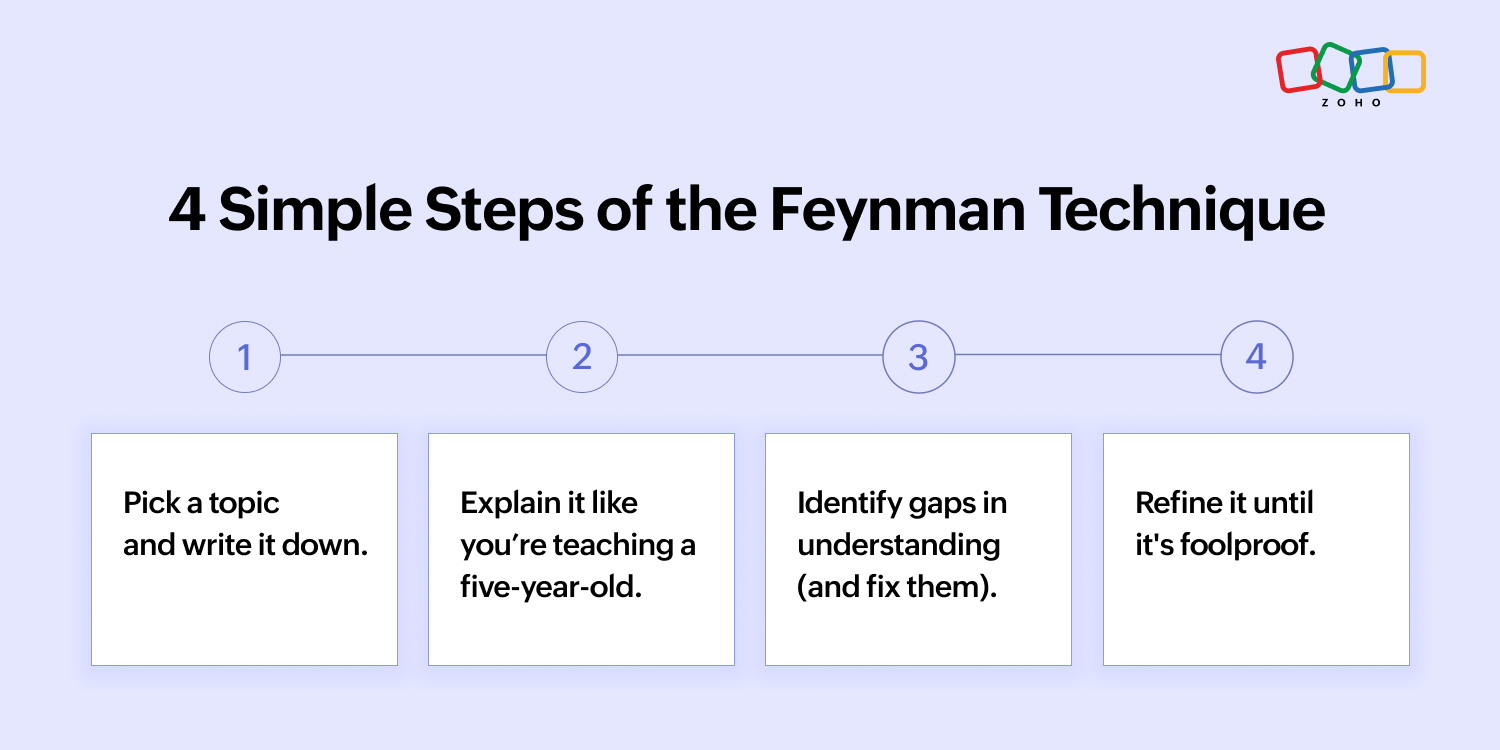
Why this technique works
The Feynman Technique isn’t just a learning trick. It rewires your brain to think faster, clearer, and deeper.
- It prevents superficial learning. Just because you read something doesn’t mean you know it. This forces real understanding.
- It makes ideas unforgettable. Explaining something in simple, visual terms creates stronger neural connections.
- It makes you communicate better. The clearer your thinking, the more persuasive you become.
This is why the best teachers, leaders, and thinkers don‚Äôt sound smart‚ÄĒthey make you feel smart.
How to use the Feynman technique at work
Here’s how to use it at work to think sharper, communicate better, and avoid those awkward "what was I saying?" pauses.
1. Communicate clearly
Ever sat through a meeting where someone says, ‚ÄúWe need to leverage cross-functional synergies to optimize KPIs‚ÄĚ? It‚Äôs like they throw in a fancy term and hope you already know what it means.
Now compare it to this: ‚ÄúLet‚Äôs get different teams working together so we can hit our goals.‚ÄĚ Clear and simple. For more tips on effective workplace communication, check out this blog post.
2. Prepare for presentations or pitches
You've got an important presentation, but does your audience really understand what you‚Äôre saying? Instead of memorizing jargons, try explaining your key points as if you were talking to a new intern. If you struggle to simplify a concept, that‚Äôs the knowledge gap. Refine it until it‚Äôs clear‚ÄĒso clear that even someone outside your field would get it.
3. Take smart notes
Instead of just copying down everything in meetings, rewrite the key ideas in your own words. Note-taking apps are great for organizing and refining your thoughts.
4. Write emails people actually understand
Ever received an email so vague you had to read it three times? Don‚Äôt be that person. Instead of ‚ÄúWe should touch base on the deliverables to ensure alignment,‚ÄĚ just say, ‚ÄúCan we check if everything‚Äôs on track?‚ÄĚ Your inbox (and the recipient) will thank you.
5. Simplify reports for decision makers
Executives don‚Äôt have time for overly detailed reports full of technical terms. Try to summarize your reports in one or two clear sentences. Use the Feynman Technique to break it down‚ÄĒwhat‚Äôs the problem, why does it matter, and what‚Äôs the takeaway? If a decision-maker gets it instantly, you‚Äôve done it right.
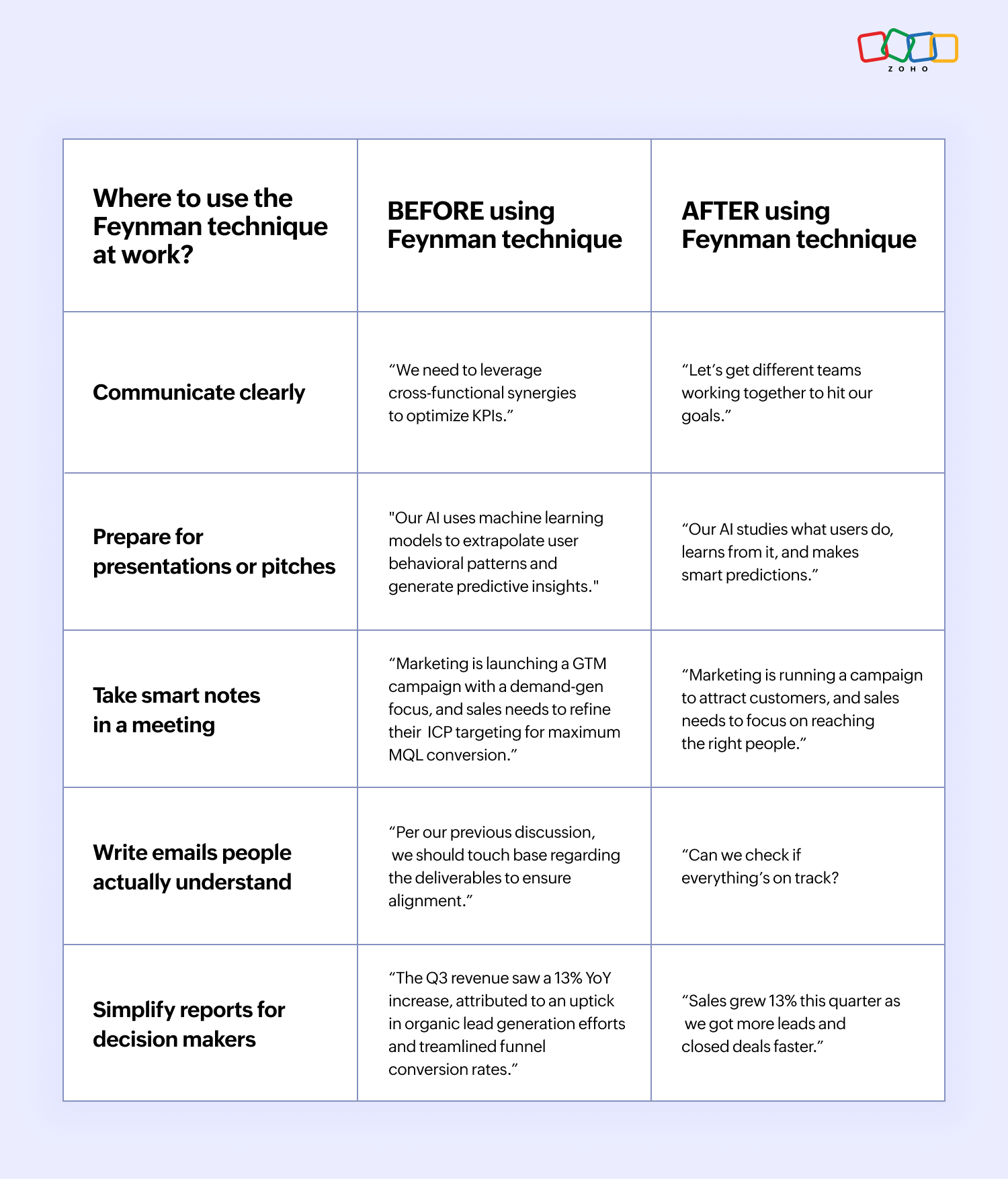
Master this technique, and you’ll not only understand things better but also explain them in a way your colleagues can get it, too.
Final thoughts: Make learning work for you
The Feynman Technique isn‚Äôt some rare talent‚ÄĒit‚Äôs a skill you can build with practice. Just like suggests that mastery comes from consistent effort, the key isn‚Äôt just time but how you practice.
So the next time you catch yourself zoning out in a meeting or rereading the same paragraph five times, try the Feynman Technique. Ask yourself: Could I explain this to a five-year-old? If not, break it down, refine it, and own it. The goal isn't to sound smart but to understand and be understood.
 Srinath Vijayakumar
Srinath VijayakumarSrinath is a product marketer for ◊Ó–¬≤©≤ ÕÝ’ĺ Workplace. He talks about productivity, tips to improve communication, and nuggets on doing your best at your workplace. He has great interest in bringing a fresh perspective to the forefront. He is highly optimistic to the extent that he opens the refrigerator every 10 minutes, hoping to find something new. Outside of work, you will catch him playing football, travelling or writing half-finished stories.
